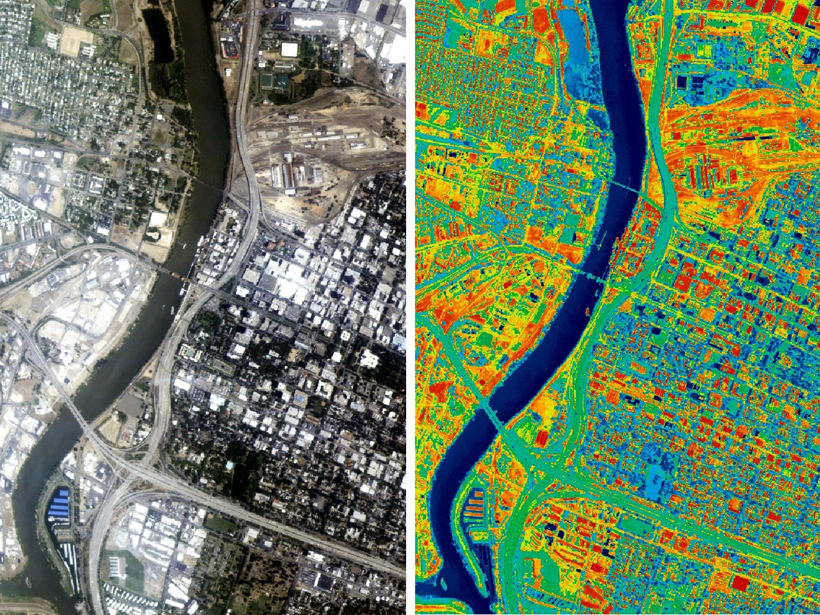Source: AGU Advances
Cities now house more than half of humanity and consume the majority of energy resources. Urban areas alter climate and atmospheric chemistry in ways that can be important at regional to global scales. However, processes influencing climate, as well as the impacts of climate extremes, are often important at the scale of individual buildings. For example, in the heat map of Sacramento (see image above), street-level variations in temperatures integrate a number of causes and in turn influence local chemical reaction rates that affect climate and atmospheric chemistry at larger scales. In a Commentary, Sharma, Wuebbles & Kotamarthi [2021] emphasize the need for urban-resolving climate models to assess the complex and multiple interactions across these spatial scales. They suggest strategies to move the field forward to provide modeling needed for a range of applications, including designing healthier and more sustainable city landscapes.
Citation: Sharma, A., Wuebbles, D., & Kotamarthi, V. [2021]. The need for urban-resolving climate modeling across scales. AGU Advances, 2, e2020AV000271. https://doi.org/10.1029/2020AV000271
—Susan Trumbore, Editor in Chief, AGU Advances
Text © 2021. The authors. CC BY-NC-ND 3.0
Except where otherwise noted, images are subject to copyright. Any reuse without express permission from the copyright owner is prohibited.

